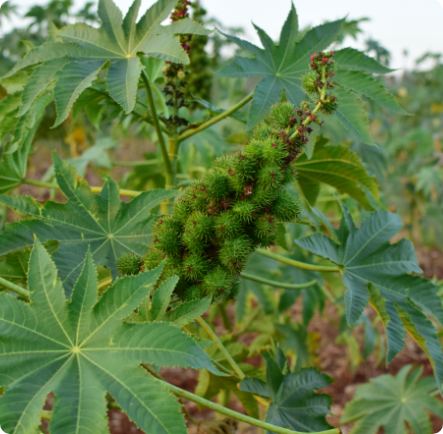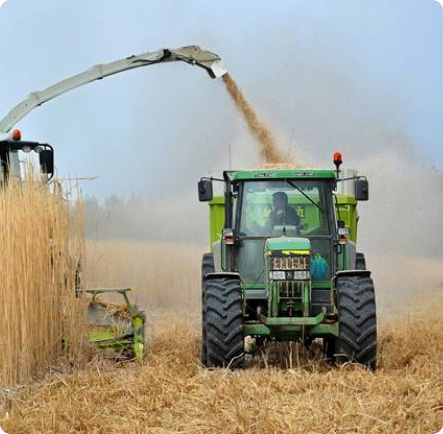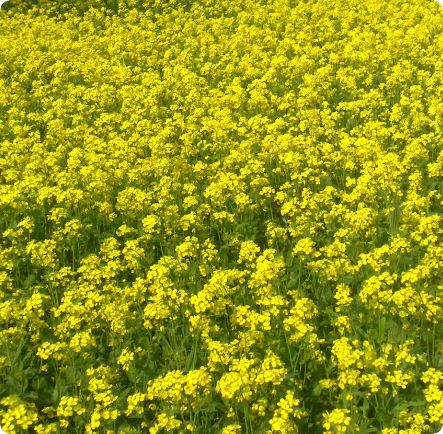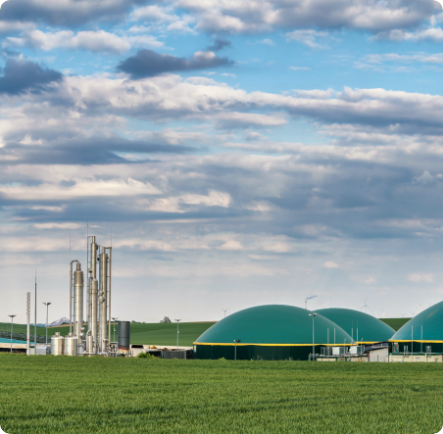Case studies

value chain
1
Cultivation in unused, abandoned or severely degraded land
case studies

Location
Sicily (IT), Tunisia and Greece
Feedstock
Castor (Ricinus communis) is a perennial flowering plant indigenous to the south-eastern Mediterranean area, and widespread in tropical regions. It can be cultivated in arid and semi-arid land and the seeds have an oil content of about 50%.
Conversion technology
HVO) – hydrogen is added to the vegetable oil to convert unsaturated compounds such as alkalenes and aromatics that are chemically unstable, into more stable and less reactive saturated alkanes (paraffins).
Proposed use
HVO from castor bean can be a sustainable solution for green diesel production, to be used in light-duty and heavy-duty vehicles, in addition to upgrading to produce sustainable aviation fuel.

Location
Italy, United Kingdom, Greece
Feedstock
Perennial grasses including mischantus and switchgrass cultivation on unused abandoned and severely degraded land.
Conversion technology
Hydrolysis and fermentation of lignocellulosic biomass for ethanol production.
Proposed use
Lignocellulosic ethanol is an advanced biofuel that can be used in light-duty and heavy-duty vehicles, with significant potential for reduction of GHG emissions when compared with fossil-based fuels and also with conventional grain-based ethanol.
value chain
2
Productivity increases from improved agricultural practices
case studies

Location
Uruguay, Italy, Greece
Feedstock
Brassica carinata (Ethiopian mustard) is an oilseed crop that can be grown in rotation with conventional food crops, as an additional high biomass cover crop, during seasons when the land is not typically in productive use for the main crop. It produces both oil for biofuels and protein for animal feed.
Conversion technology
Hydrotreated Vegetable Oil (HVO) – hydrogen is added to the vegetable oil to convert unsaturated compounds such as alkalenes and aromatics that are chemically unstable, into more stable and less reactive saturated alkanes (paraffins).
Proposed use
Light-duty, heavy-duty vehicles and sustainable aviation fuels. The production of this biofuel is already certified as “low ILUC risk” by the Roundtable on Sustainable Biomaterials and by ISCC.

Location
Italy and Greece
Feedstock
Double cropping with a primary crop for food or feed and a secondary crop for energy production with crop rotation. The BDR model, based on cover cropping, ensures year-long covered soil and improves the soil quality for the main crop.
Conversion technology
Production of biogas through BDR model in decentralized plants, injection of biomethane into the grid, and further processing in centralized biomethane-to-liquid conversion plants for F.T. diesel or MeOH production.
Proposed use
BDR ensures the sustainable production of biomethane, avoids soil erosion and nitrogen emissions, in addition it increases the availability and use of organic fertilizers. The conversion to liquid of biomethane can produce diesel or gasoline substitutes to be used in light-duty or heavy-duty vehicles and kerosene as a sustainable aviation fuels.
